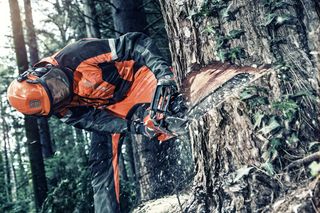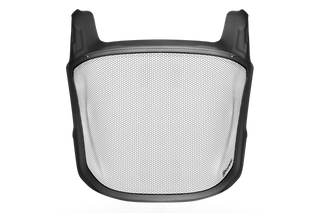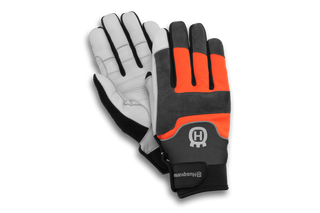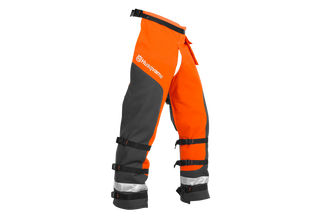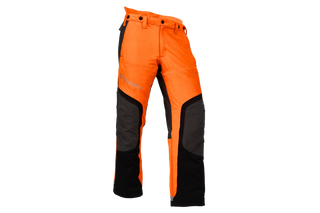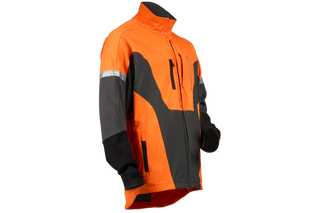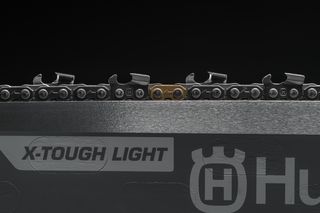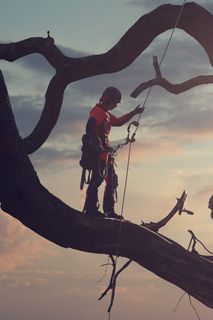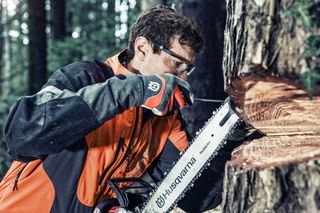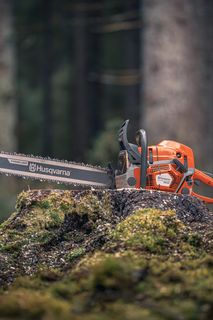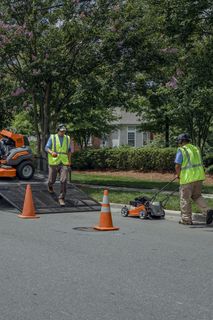Chainsaw Safety Gear & Protection Tips
Ensure you are ready for the job with Husqvarna's chainsaw safety gear. Explore essential safety tips and browse our comprehensive range of protective gear, including chaps, helmets, and more, to ensure maximum safety while operating chainsaws.
| Before you start |
|---|
There are a several things you need to do before you start working with a chainsaw. If you are working alone, make sure to keep these rules in mind:
|
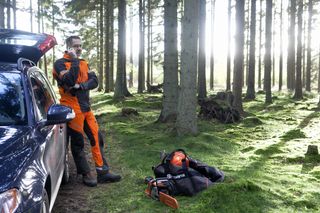
1. Chainsaw safety equipment
Before you start working with a chainsaw
Ensure you are properly dressed and equipped for the job. All chainsaws come with some mandatory safety features (see fact box). All Husqvarna chainsaws include an inertia activated chain brake. If a kickback occurs and the tip of the bar is forced upwards, the inertia of the front guard should activate the chain brake instantly to stop the chain.
The most common chainsaw injury is a laceration, an injury that breaks the skin. Wearing the right protective apparel minimizes the risk of laceration and other injuries. All of Husqvarna’s chainsaw protective clothing is tested and approved in accordance with relevant European and International standards where required. Your personal protective equipment should always include the following:
- Helmet with earmuffs, visor and protective glasses
- Protective pants or chainsaw chaps
- Forestry jacket/shirt with proper upper body coverage
- Protective trousers
- Anti-slip boots
- Gloves
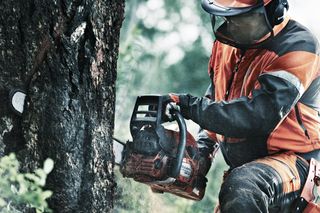
Recommended products
2. Plan for “on site-safety”
When you arrive at the working site, it’s time to plan for the felling. First of all, ensure that nobody is within a distance of at least twice the tree height from the tree you intend to fell. Study the tree to see if it has been damaged by decay or cracks. Is the tree leaning? In which direction should the tree be felled, bearing in mind your future work?
3. Felling direction
Most trees have a natural direction of fall. This is affected by the tree’s lean, the shape of the branches and crown snow-load or snow-covered branches. If you are unsure of the tree lean, move away a little and check with a plumb line.
To some extent, you can force a tree to fall against its natural falling direction, but this requires knowledge, experience and the right felling support tools. Trees with weak timber, such as dead or decayed trees, should always be felled in the easiest direction.

4. Chainsaw handling
Finally, here are tips for handling the chainsaw. Using proper techniques will minimize the risk of injury or strain.
- The thumb grip Wrap thumbs and fingers completely around the handles and hold your left-hand thumb under the front handle to reduce the force of a kickback.
- Close contact Don’t be afraid of the saw. Hold it close to your body to achieve balance and accuracy.
- Position The optimal working position is with your left foot in front of your right and with your knees – not your back – bent.
- Chain off The chain must never be rotating when you move to another spot.
- Safety distance Make sure no one is within 3 metres when you’re working with a chainsaw.
| Chainsaw safety features – and what they mean |
|---|
|
| Two quick chainsaw safety tips |
|---|
|
